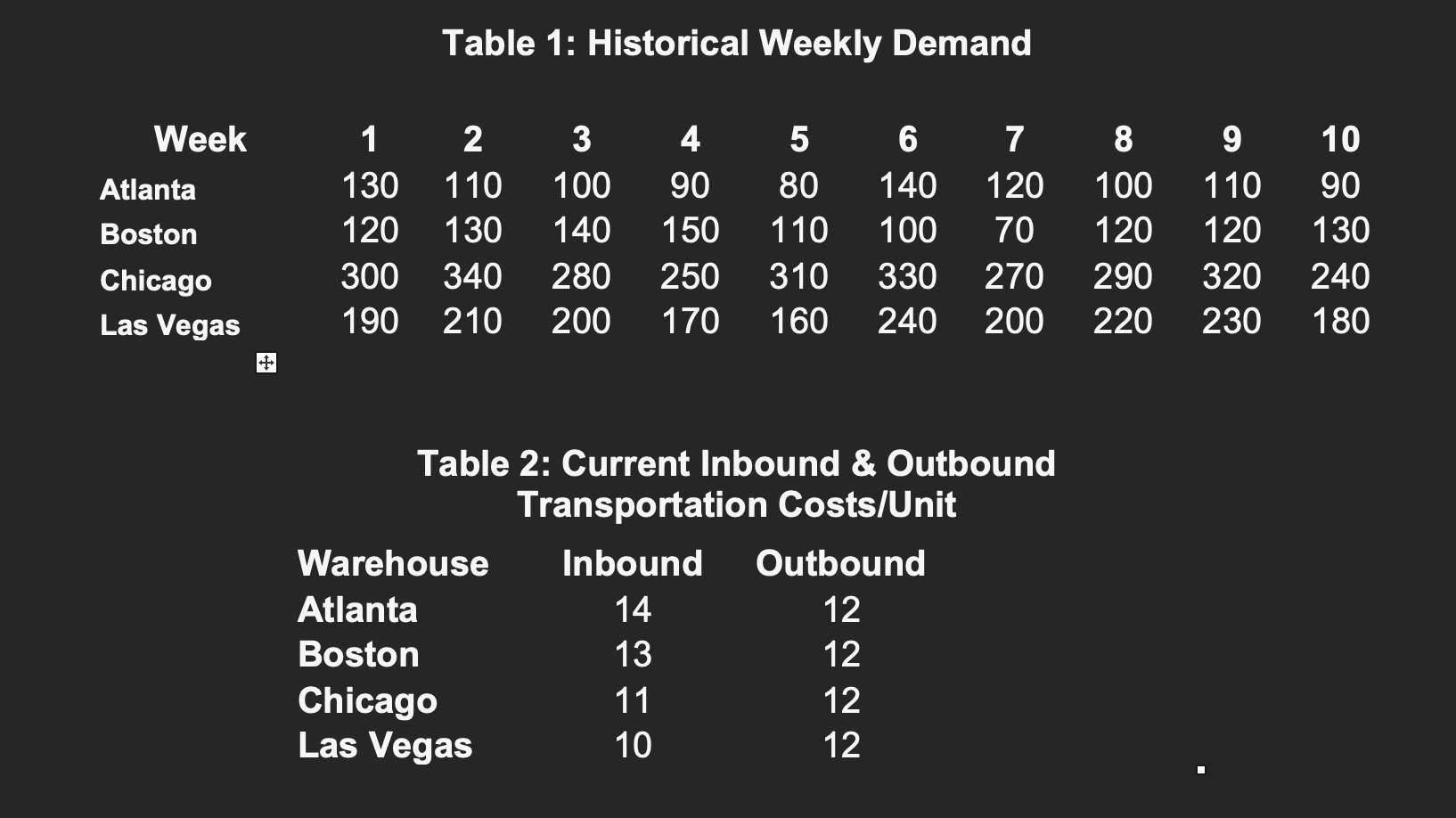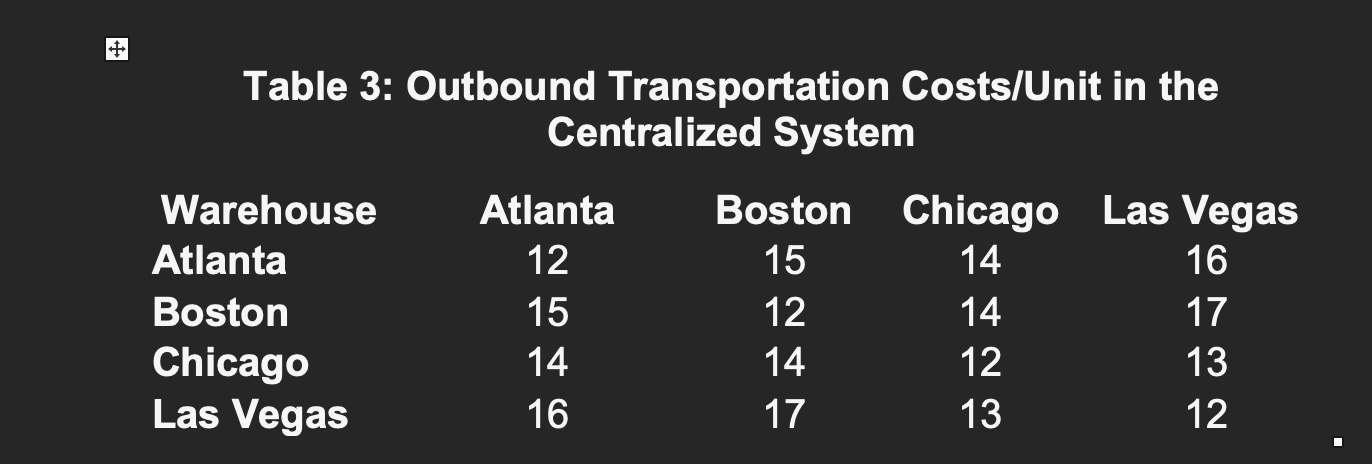Question
XYZ Company is a manufacturer of construction equipment. The company has a single manufacturing facility in Seattle, Washington. XYZ Company distributes its products through four
XYZ Company is a manufacturer of construction equipment. The company has a single manufacturing facility in Seattle, Washington. XYZ Company distributes its products through four regional warehouses located in Atlanta, Boston, Chicago and Las Vegas. In the current distribution system, the United States is partitioned into four major markets, each of which is served by a single regional warehouse in their market. That is, in the current distribution system, each customer is assigned to a single market and receives deliveries from one regional warehouse.
The warehouses receive items from the manufacturing facility. Typically, it takes about three weeks to satisfy an order placed by any of the regional warehouses. Currently, XYZ provides regional warehouses with a service level of 95 percent.
In recent years, XYZ Company has seen a significant increase in competition and intense pressure from its customers to reduce costs. To reduce costs, XYZ Company would like to consider an alternative distribution strategy in which the four regional warehouses are replaced with a single, central warehouse that would process all customer orders. This warehouse should be one of the four existing warehouses. The company CEO insists that whatever distribution strategy is used, XYZ should maintain a service level of about 95 percent.


- To perform a rigorous analysis, you have identified a typical product X. Table 1 provides historical data that includes weekly demand for this product for the last 10 weeks in each of the market areas. An order (placed by a warehouse to the factory) costs $1,500 (per order), and inventory carrying costs are $1.75 per unit per week. In the current distribution system, the cost of inbound and outbound transportation costs per unit is given in Table 2. Finally, Table 3 provides information about inbound and outbound transportation costs per unit from each of the existing regional warehouses to all other market areas (assuming a particular regional warehouse becomes the centralized warehouse).Suppose you are to compare the two systems for Product X only, what is your recommendation? To answer this question, you should compare the total costs (i.e., ordering cost, inventory carrying cost, inbound transportation cost and outbound transportation cost) for the two strategies, assuming demands occur according to the historical data. Also, you should determine which one of the four regional warehouses should be used as the centralized warehouse.
Step by Step Solution
There are 3 Steps involved in it
Step: 1

Get Instant Access to Expert-Tailored Solutions
See step-by-step solutions with expert insights and AI powered tools for academic success
Step: 2

Step: 3

Ace Your Homework with AI
Get the answers you need in no time with our AI-driven, step-by-step assistance
Get Started


